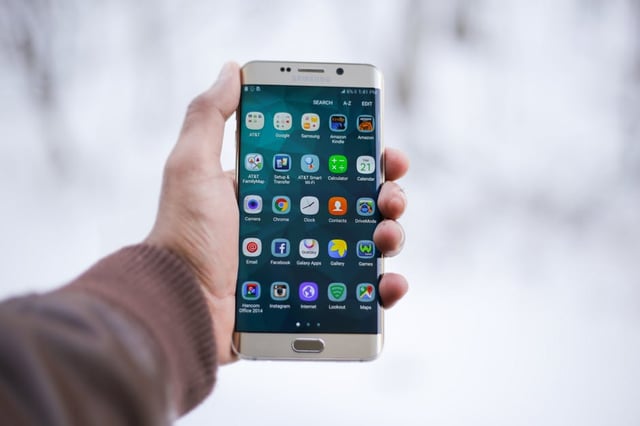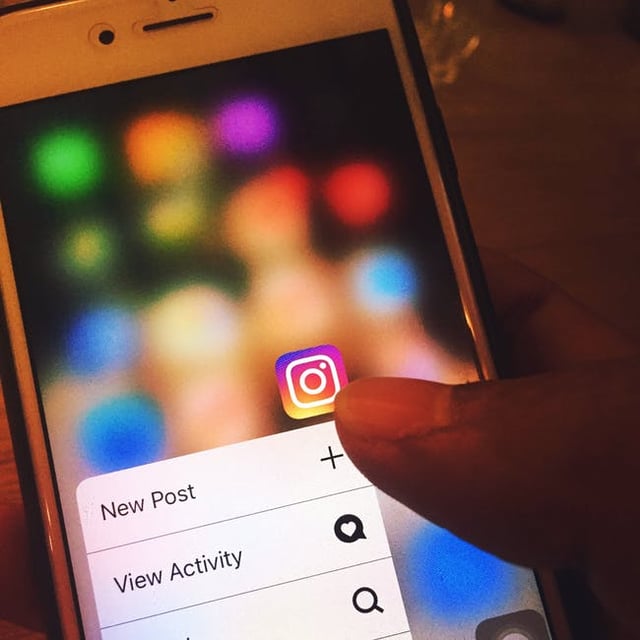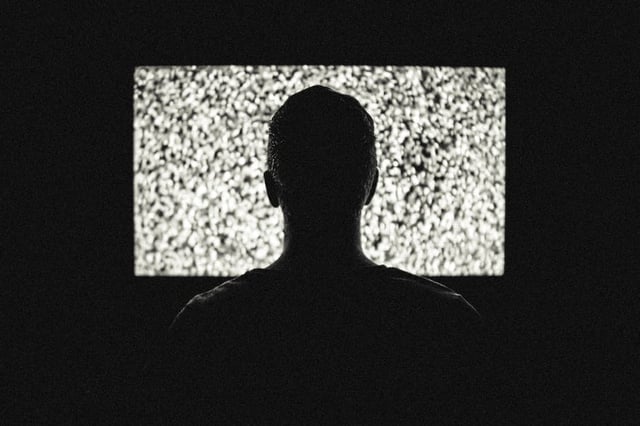When you think about social media and your students, I'm guessing most of you probably lean towards the negative. Social media has caught a lot of flack in the media lately for the harm that it's doing to teens. There's no denying that students are using social media in the classroom and that it can be linked to distraction, misinformation (fake news anyone?) and at the extreme, bullying and harassment.
However, social media can also be a really positive tool in the classroom and an effective way of getting your students to become more educated about the world and to begin enacting change in their communities. Since social media isn't going to go away, we might as well start teaching students to use it for good!
How can you use social media for social good? Here's 5 ways that you can get students thinking about how they can use social media in a different way!
1) Informed Citizens and Media Literacy

According to the Pew Research Centre, approximately nine out of ten Americans get their news online now. Interestingly, an overwhelming amount of this comes not just from dedicated news websites but from social media sites (Facebook being the leading news source for most Americans). Other studies have shown that teens in particular are getting their news almost exclusively from online sources such as Twitter and Snapchat.
On the one hand, this means that the news is more accessible for students than ever, meaning we can help students become more informed and engaged about current events in their communities and around the world. However, in the rise of fake news stories it can be hard for students to know if what they're reading is true. This is where it can be helpful for teachers to step in and start teaching students about media literacy.
Common Sense Media has some advice about how teachers and parents can encourage their students to read the news and think critically about the information they are consuming. They suggest supporting students in asking questions like:
- Who wrote this?
- Who paid for it?
- Are other more credible news sites reporting on this?
If you're looking for some summer reading before going back to school consider reading over this Stanford University study that tested student's abilities in differentiating fake from real news. You could even try some of the activities described in your own classroom!
2) Responsible Crowdfunding

Another way that students can use use social media to engage within their communities and to support non profits and social businesses is by learning about crowdfunding. In recent years crowdfunding sites like Kickstarter and Indiegogo have become very popular. One trend that has been gaining traction lately is supporting social good movements and activists through online platforms and crowdsourcing campaigns.
Encourage students to get involved by using online campaigns to support their favourite causes. Getting students involved in fundraising processes can teach them valuable skills about ethics and financial literacy, and crowdsourcing is a great place to start because it taps into social media skills that many students already have.
Encourage students to look for unique social businesses and activists on the various sites and to consider supporting them and their causes. This can be a great way to expose students to social issues and, more importantly, they can gather inspiration from what other people are doing to find solutions for pressing world issues. Make sure to check out this post for some suggestions for determining whether or not a campaign is ethical first.
Some great resources for responsible crowdsourcing:
- 8 Crowdfunding Sites for Social Entrepreneurs
- Catapult: Hosts projects and campaigns that support gender equality and women and girls around the world
- Patreon: Pledge a monthly amount to artists and creators to help support their work
3) Engaging the Community
.jpg?width=640&name=Ecuador%20(8%20of%20161).jpg)
Perhaps one of the easiest ways to show how you can use social media for social good is to engage your communities on issues that you're passionate about. Encouraging students to use social media to get informed and to help their peers get informed is easy- they're already on social media anyways and many of them already have pretty impressive networks built up of online followers.
While criticism has recently been leveled at online campaigns as being "slacktivism", they are an easy and accessible way to first get students thinking about pressing issues and to start thinking about what they can do.
Start by exposing your students to examples of successful campaigns and get them to think critically about the issues and about the actions taken as part of the campaign. As they get more familiar with the world of online activism, encourage them to share and participate in campaigns so that they can help educate their peers. Online activism can be a great starting point for inspiring young activists and change makers and is a good way to engage 21st century learners.
Check out the below examples for some successful online campaigns:
- #IfTheyGunnedMeDown: challenging the portrayal of black youth by news outlets.
- #TheAfricaTheMediaNeverShowsYou: showcasing a different side of Africa.
- #EverydaySexism: exposing microaggressions women face in society.
4) Using Technology

Social media and technology go hand and hand- most students now can barely remember a time when technology wasn't a part of their lives, making it easier for them to see the opportunities of using technology to enact change than many adults.
It can be a particularly great way to reach budding engineers, computer science students etc. as well. Just show them some of these pioneering youth who've created apps to help their communities. For example, teenagers in Georgia created Five-0 to track and report police brutality in their communities. Another great example is this fantastic group of Kenyan girls who created i-Cut, an app where girls can report instances of female genital mutilation (FGM) and get help and support from authorities and community members.
Another way to use technology to do some social good is by encouraging your female students to get involved with coding and computer sciences. There's a big gender gap in STEM fields with girls being under represented so encouraging them to get into coding in school is a great way to generate interest in the field. For advice on how to engage girls in computer sciences, check out this New York Times article.
5) Social Media and Self Care

Suggesting that you can use social media for social care might seem pretty hypocritical especially with social media (Instagram, I'm looking at you) being linked to low self-esteem, particularly in girls. Taking care of your self is a radical act and modeling good self care habits and supporting your students in developing their own is essential, especially in the wake of rising depression and anxiety rates in young people.
While social media can definitely be harmful to student's health, it can also be a great way to provide resources and support since so many students already have multiple social media accounts. There's also tons of activists on social media actively working to make safer spaces and to challenge the illusion of a perfect life that many people create.
Social media is a powerful tool and a great way of connecting with your 21st century learners to inspire and engage them on social issues in their community.
If you're looking for more specific lesson plans on some of the social issues touched upon in this blog post click below to see our global citizenship curriculum.





Leave A Comment